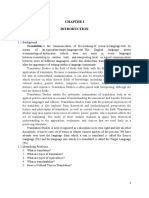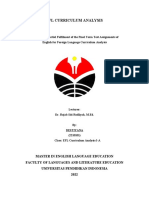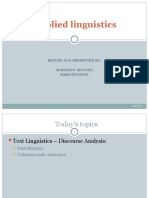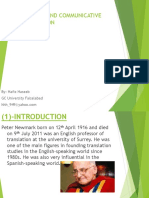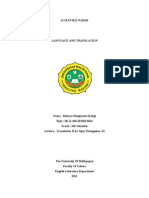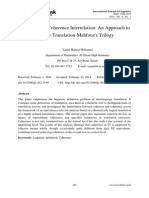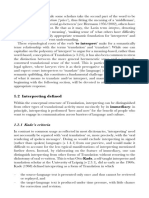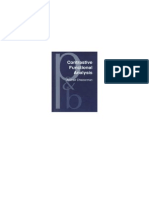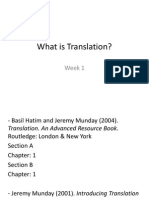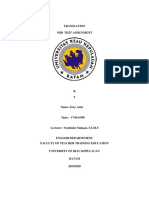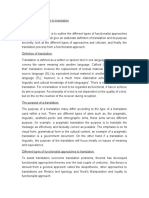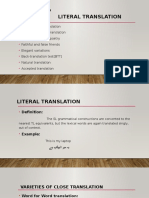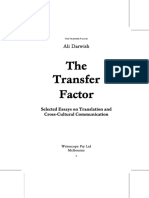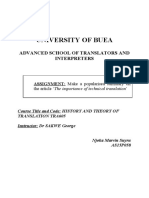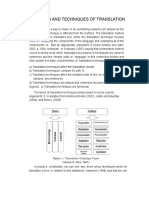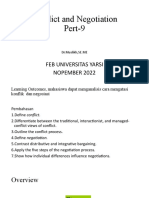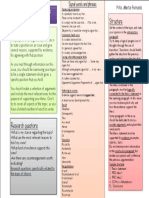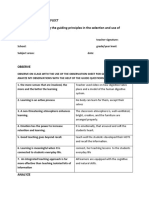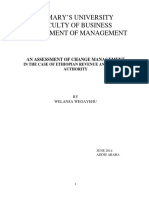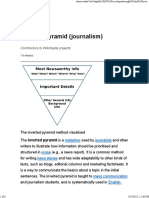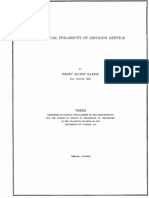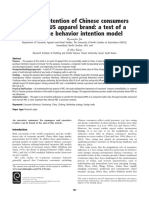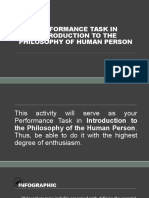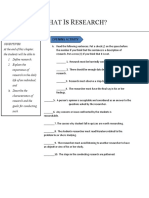0% found this document useful (0 votes)
234 views3 pagesPresentation of Translation
Translation theory is the basis of translation and discusses the principles and approaches to translating between languages. There are several prominent translation theories that focus on different aspects of the translation process. Catford's theory views translation as replacing textual elements in one language with equivalents in another. Newmark's theory emphasizes translating the intended meaning of the source text. Nida and Taber's theory focuses on rewriting the message of the source text to find similarities in the target language while prioritizing meaning over style.
Uploaded by
Ines Soualah MedCopyright
© © All Rights Reserved
We take content rights seriously. If you suspect this is your content, claim it here.
Available Formats
Download as PDF, TXT or read online on Scribd
0% found this document useful (0 votes)
234 views3 pagesPresentation of Translation
Translation theory is the basis of translation and discusses the principles and approaches to translating between languages. There are several prominent translation theories that focus on different aspects of the translation process. Catford's theory views translation as replacing textual elements in one language with equivalents in another. Newmark's theory emphasizes translating the intended meaning of the source text. Nida and Taber's theory focuses on rewriting the message of the source text to find similarities in the target language while prioritizing meaning over style.
Uploaded by
Ines Soualah MedCopyright
© © All Rights Reserved
We take content rights seriously. If you suspect this is your content, claim it here.
Available Formats
Download as PDF, TXT or read online on Scribd
/ 3


